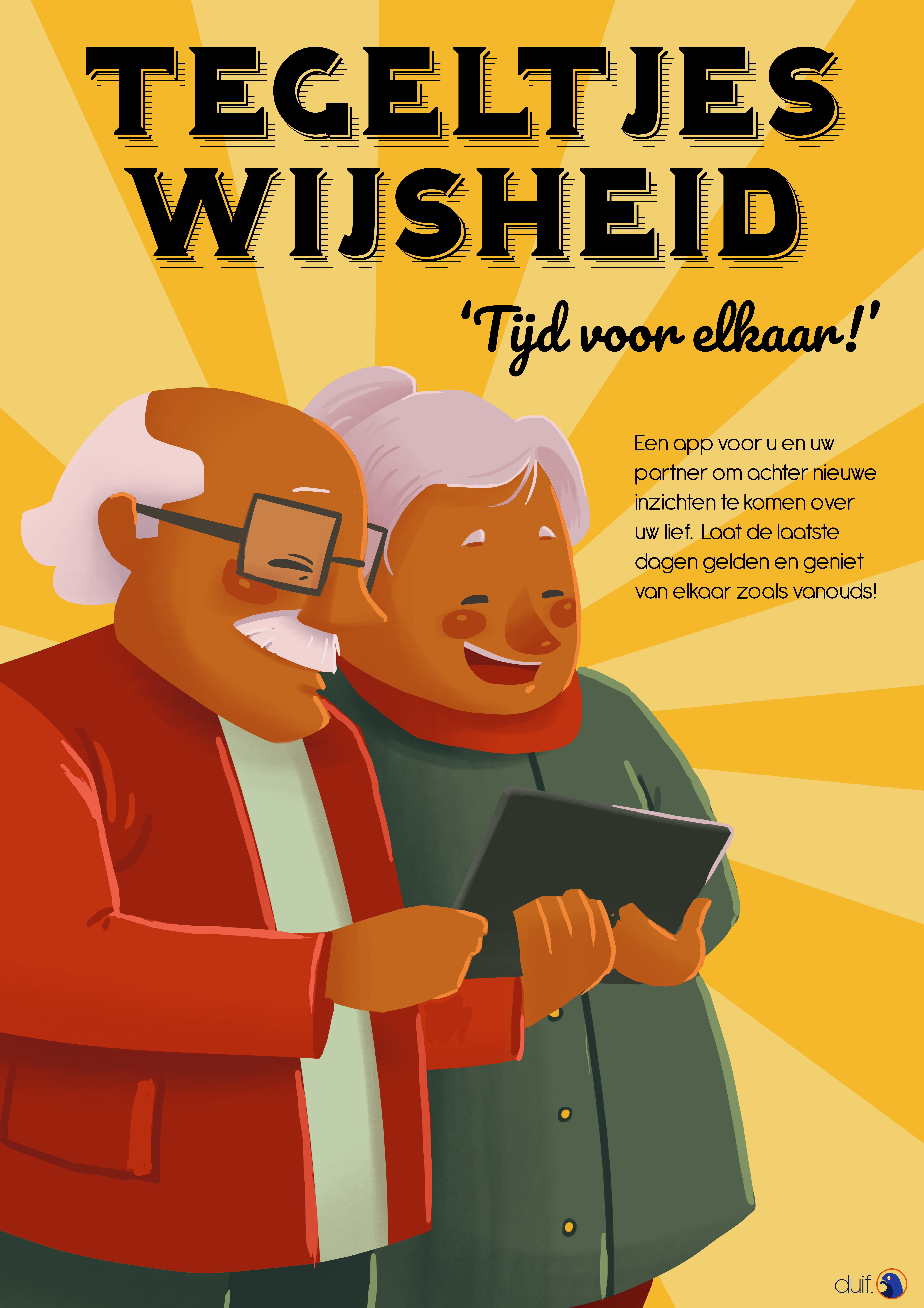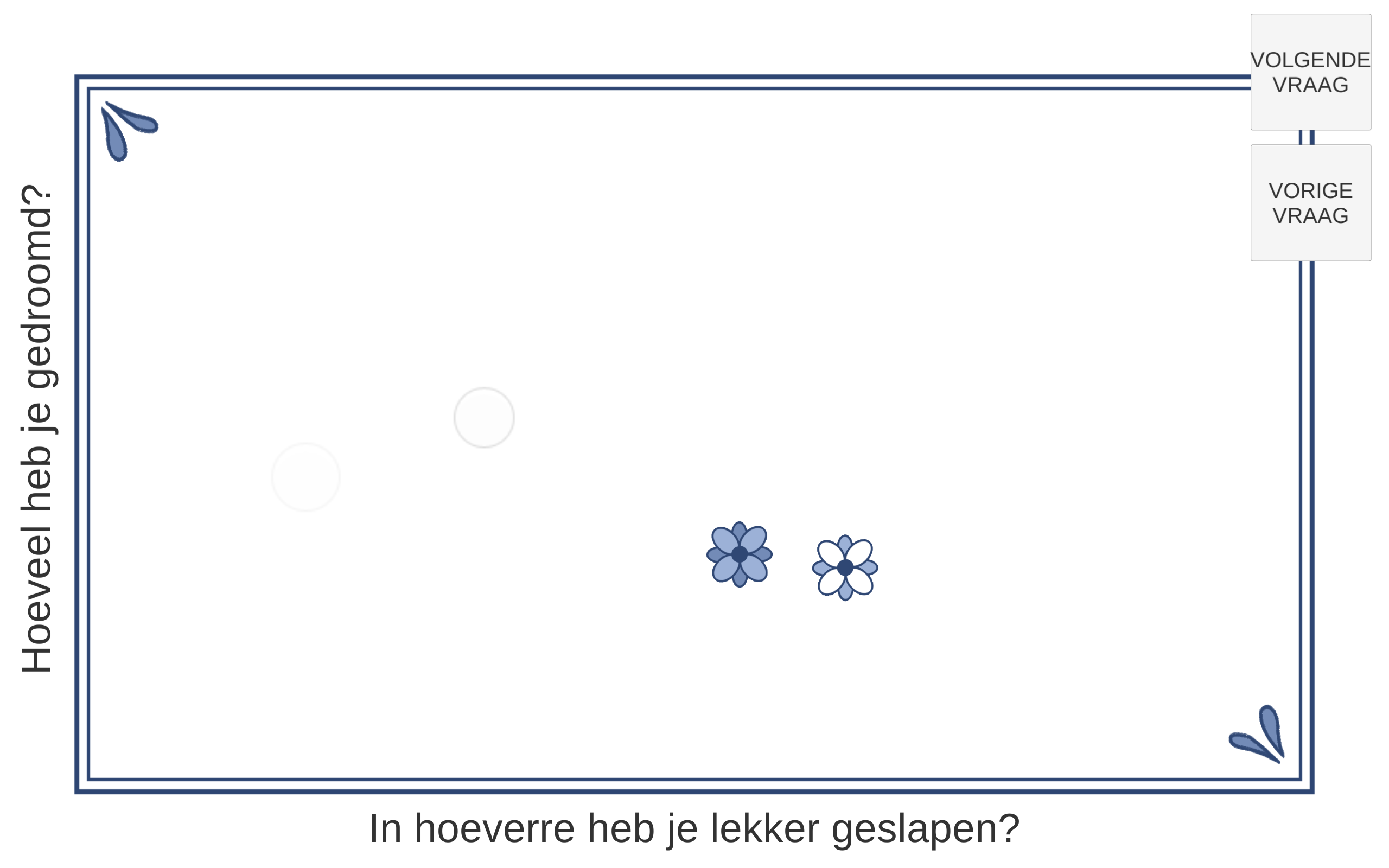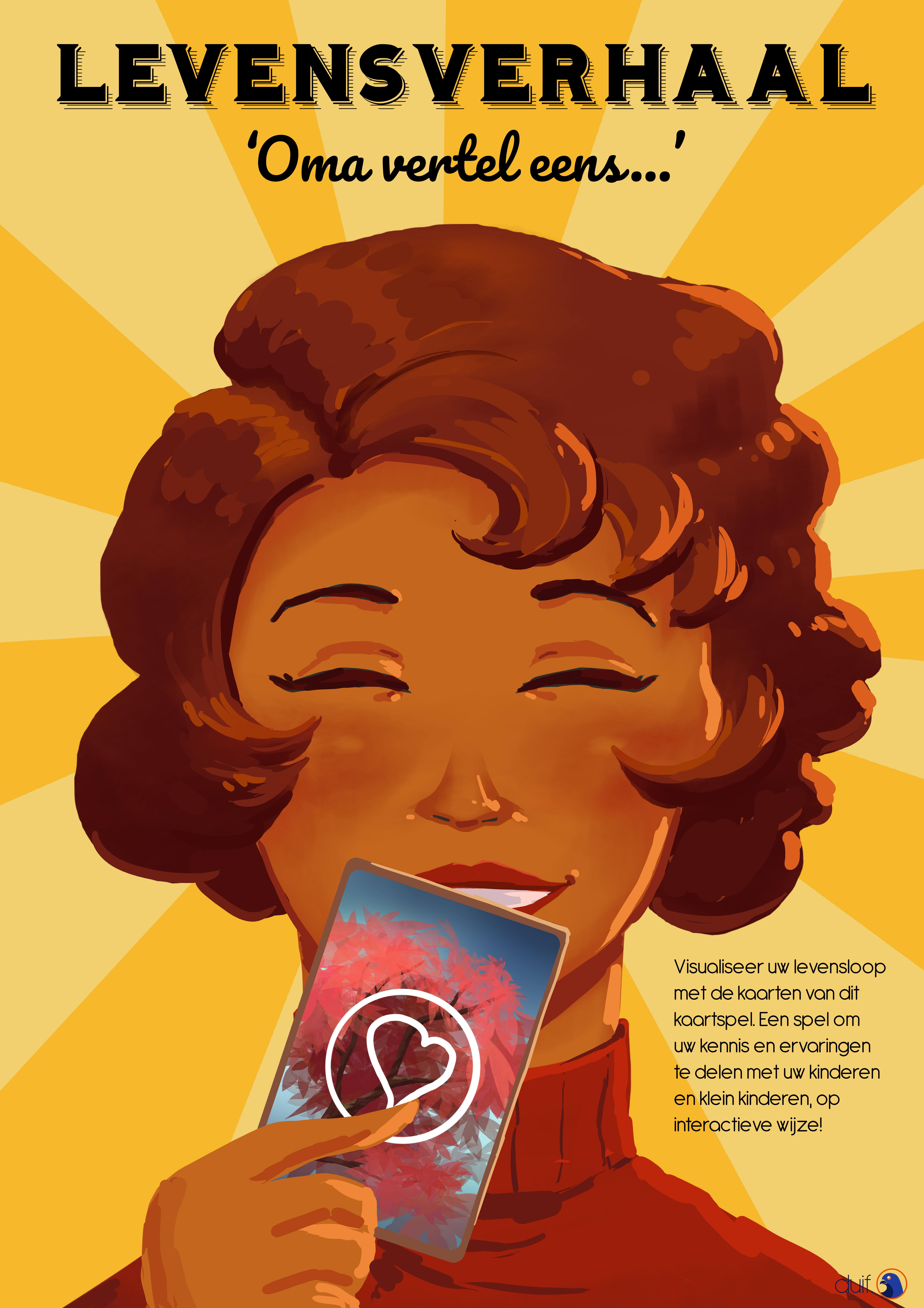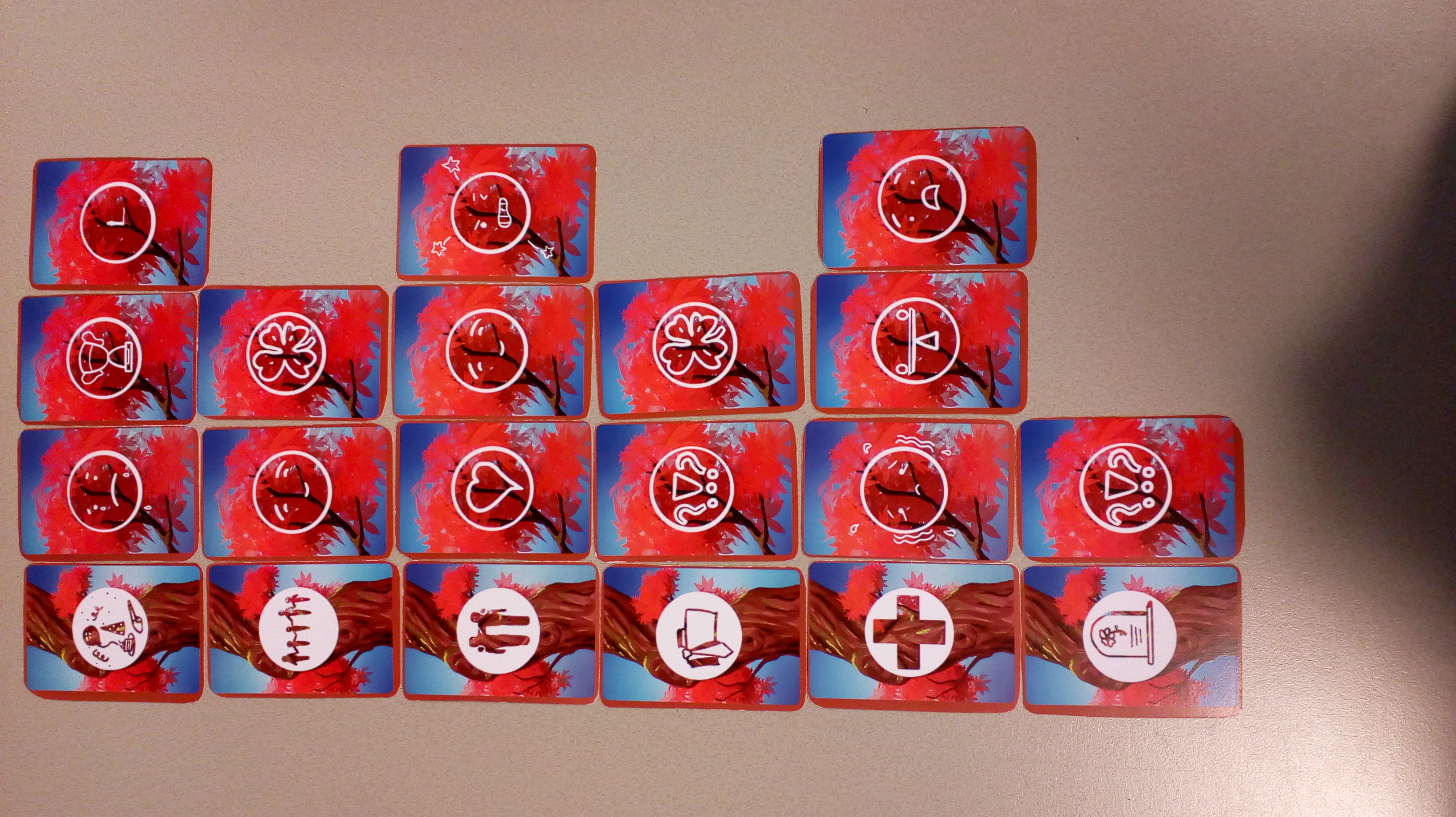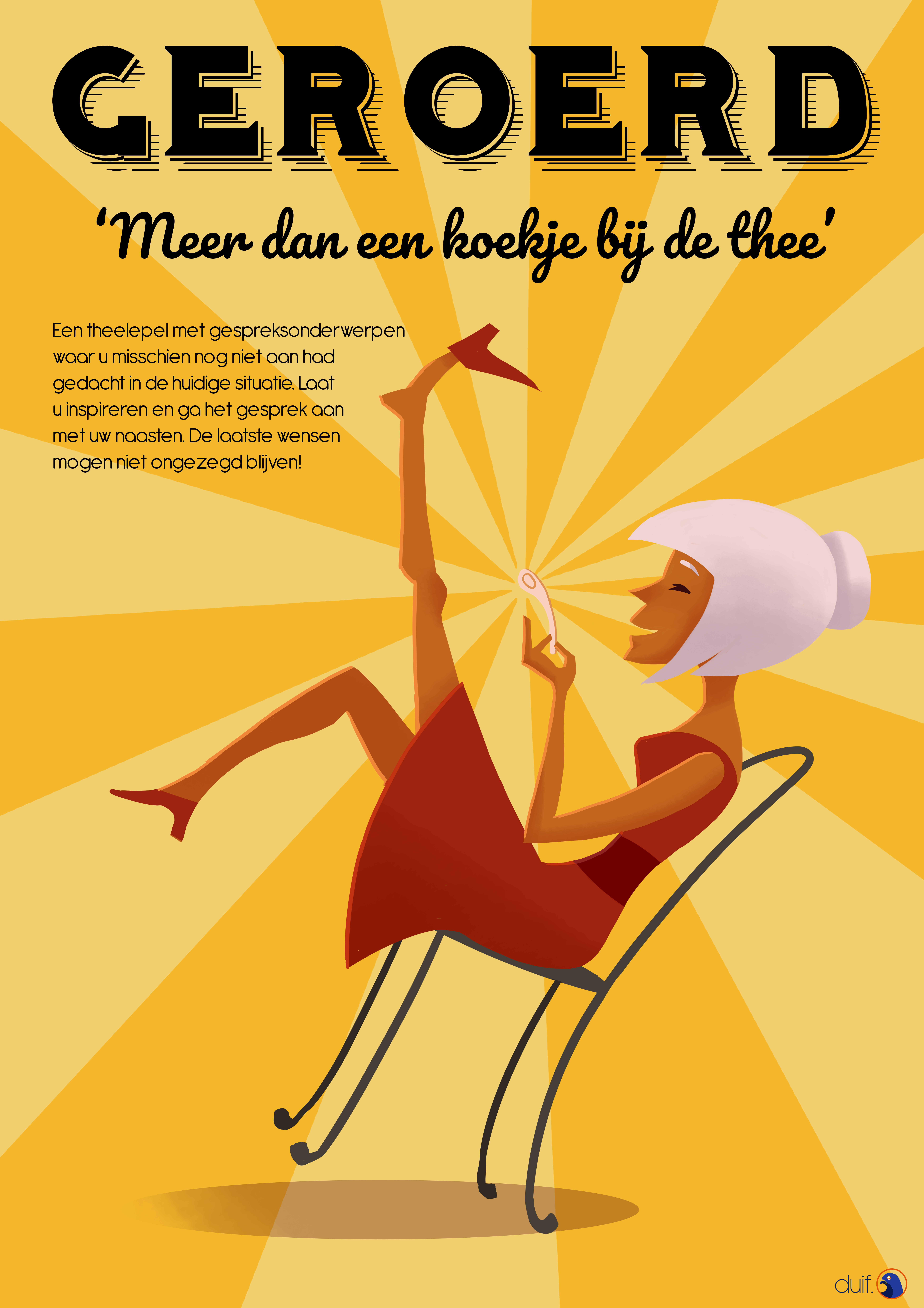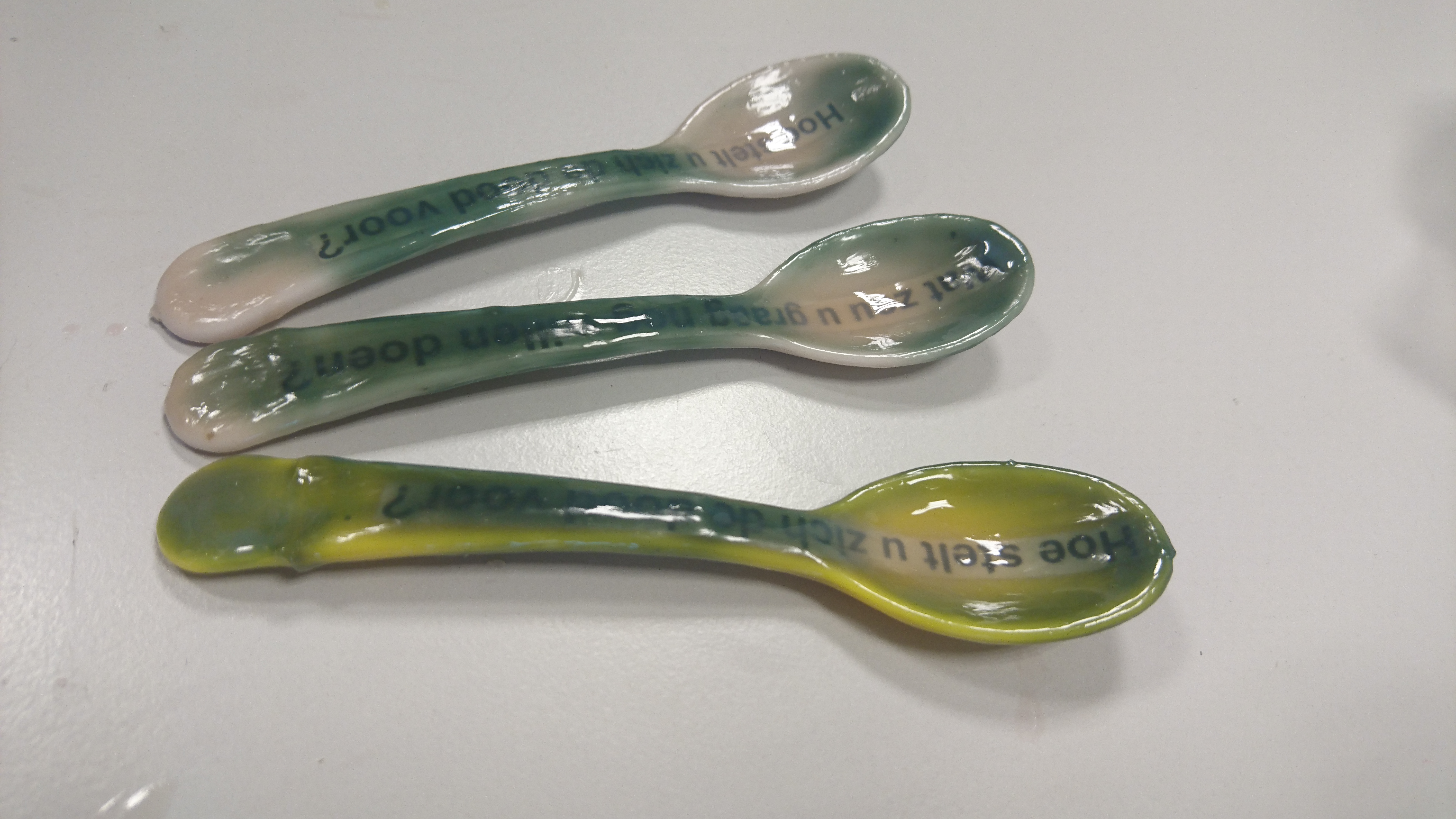Levenseinde (end of life) is an exploratory project into what interaction can do to improve communication between the terminally ill elderly and their loved ones.
Design
Key design decision
I’m going to talk about one of the three concepts we developed into a somewhat refined prototype.
We stumbled on an effective way of starting meaningful conversations by having players estimate the answers of their co-player.
My contribution, then, was in safeguarding this core effectiveness while simultaneously improving on it. I did this by coming up with alternative versions of several game elements, and testing these alternatives to see if the change was an improvement.
This can be seen in the designproces.
Levenseinde Design Process (Dutch) (1170 downloads )Project
Approach
heavily invest in teambonding to create a safe environment in which it is okay to discuss feelings surrounding death
researching and familiarizing oneself with this serious subject matter, by interviewing several experts in this subject field (e.g. an end-of-life coach, a preacher)
quickly creating throwaway concepts to redefine project deliverables and problem definitions
creating persona’s as the embodiment of three different problem definitions
evaluating on 1/6th of the project duration (something I picked up working on a previous project)
prototyping and playtesting to improve on game mechanics and interface/feedback clarity
Result / Evaluation
3 prototypes that each take a different approach on tackling the main problem
complete research, project and design documentation
design advice for a possible follow-up team
presented results to a group of ~30 subject field experts
featured on regional television
It’s possible to deal and design with heavy subject matter by being respectful and curious and the same time
Subject experts are a great way to get (additional) information about a vulnerable target audience, even if it imposes a risk because they’re not the target audience themselves
‘Exploratory’ does not mean ‘define no clear goals or deliverables’: it’s important to distinguish between ambiguity in the design process (which can absolutely be a good thing) and ambiguity in the project boundaries (which, you guessed it, is not a good thing)
1/6th evaluation yielded less information than I hoped for, but it did confirm everyone was still on board and motivated
Process
We wanted to know for whom we were going to design our games/toys/things, and wanted to get familiar with how care for the terminally ill worked right now. Because we had explicitly been told to not engage with the (vulnerable) target audience, we sought out experts in the subject field, ie. people that have to deal with the terminally ill elderly on a daily basis. Also, we shared our own experiences regarding death and communication with (terminally) ill family members.
All in all, this process was a liberating experience because by talking about these things, we broke the taboos surrounding the subject. This open way of speaking about death gave us some special moments where a stranger would open up and share his or her own experiences. It was an enriching life experience in its own right.
Of course, the subject ‘terminally ill elderly and their communication with their loved ones’ is a very broad subject, and much of the work we did was in carving out specific problems and definitions to guide what we were going to make.
The research coalesced into three personas, each with their own problem. Because we had quite a large team and our client mainly wanted to see different possibilities we decided to come up with solutions to all three problems.
I personally worked on two of the three resulting problem definitions, and helped shape the prototypes we showcased at the end of the project. We got a feature on the regional television for that showcase.
Our client was quite happy with the results. We showed our prototypes and explained the underlying design to a group of about 30 experts. We were encouraged to further develop these prototypes, but chose to focus on other projects instead.
Project Role
Niels de Jong – designer (tegeltjeswijsheid + levensverhaal), programmer
Youri Stans – game artist, designer (tegeltjeswijsheid)
Kris van Geel – interaction designer (geroerd)
Floris Roding – game artist, designer (levensverhaal)
Loren de Bont – game artist
I personally worked on two of the three concepts, created paper and digital prototypes for these concepts and iterated on those.
I also wrote the general design process documentation and the specific design process documentation for the two concepts.
Project Duration
17 weeks
started the 18th of september 2017
stopped the 23rd of january 2018
Play Time
The download of one of the prototypes is below
play time is 10~30 minutes depending on how much you talk
Links
Levenseinde Design Process (Dutch) (1170 downloads )
feature regional television
Levenseinde RTV Utrecht uitzending (2073 downloads ) (starting from 10m55s)
playable .apk of one of the concepts
tegeltjeswijsheid android (Dutch) (1333 downloads )
(please note this is a development version so you’ll need to be in developer mode and allow unsafe apps)
(2 player couch/hotseat co-op, works best on tablet)
